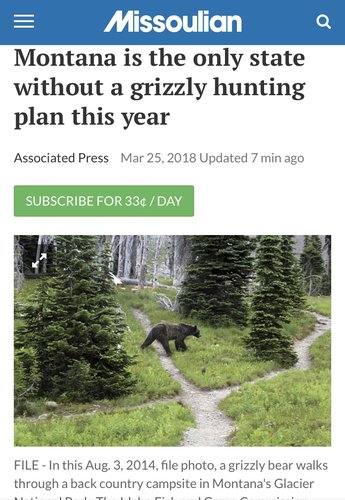I actually think the number is low. With an estimated population of 750 and a threshold of 600 (100 above the recovery objective). I think that 50 would have been a better number. I think they decided to go with a more conservative number of 24.
Theoretically speaking
If half of the population is female = 375 bears
About half of them have young this year (187) with an average litter of 1.
If you say 50% of the young do not make it to winter.
Then you have 93 new bears in the population.
If you take 24 or 50 out of there, then theoretically it can be sustained.
It is theoretical, but I do think that 50 would be a better number.
Finally, dealing with some numbers. Thanks, Dude.
I don't necessarily agree. Sow grizz don't always reproduce, and when they do, it's not a yearly deal. Cubs stay for a couple of years and females only produce every 3 years, IIRC. You a generous number would be 1/3 of all females reproduce every 3 years, then add in cub mortality and other measures of death like roads, livestock depredation, etc you quickly go from 50 to possibly 10, which I think would be a much more defensible number across the state than 24, which seems unrealistic and set up for legal conflict.





